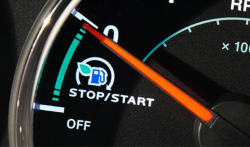
— An Audi Start-Stop system lawsuit alleges the feature causes vehicles to unintentionally roll away because of a defect in the Start-Stop systems.
Included in the proposed class-action lawsuit are the following vehicles:
- 2013-2017 Audi A3
- 2013-2017 Audi A4
- 2013-2017 Audi A5
- 2013-2017 Audi A6
- 2013-2017 Audi A7
- 2013-2017 Audi A8
- 2013-2017 Audi S3
- 2013-2017 Audi S4
- 2013-2017 Audi S5
- 2013-2017 Audi S6
- 2013-2017 Audi S7
- 2013-2017 Audi S8
- 2013-2017 Audi RS 5
- 2013-2017 Audi RS 7
- 2013-2017 Audi allroad
- 2013-2017 Audi Q3
- 2013-2017 Audi Q5
- 2013-2017 Audi Q7
- 2013-2017 Audi SQ5
- 2013-2017 Audi TT
- 2013-2017 Audi TTS
- 2013-2017 Audi TT RS
- 2013-2017 Audi R8
The plaintiffs say the Start-Stop system is activated by default and allegedly helps to increase fuel economy and reduce carbon dioxide emissions, and Audi describes the system as such:
"The start-stop system automatically switches off the engine when the car is moving at a low speed or is stopped, for example at traffic lights, and starts it automatically when the speed increases or the journey continues. As the car is braking to a standstill, the system switches off the engine and signals this via a symbol on the dashboard. When you release the brake pedal to continue on your journey, the engine starts and the symbol on the dashboard is removed. When the Audi comes to a stop, at a traffic light, for instance, the control unit shuts off the engine. The driver must keep the brake pedal depressed (automatic transmission) or release the clutch pedal (manual transmission). A powerful starter energized by a heavy-duty, deep-cycle battery restarts the engine quickly and easily when the driver releases the brake or steps on the clutch again to engage a gear."
Plaintiff Anzhelya Makaryan says she leased a new 2017 Audi A3 in October 2016 and allegedly experienced the unintended rolling problem on numerous occasions when entering a parking garage. After removing the seat belt when already in the front gate of the building, the Start-Stop system didn't start the engine, causing the vehicle to roll down the driveway as soon as the driver released the brake pedal.
The plaintiff reports that after the problem occurs, even putting the seat belt back on right after and pushing the ignition button does not start the engine. The only way to start the engine is by putting the vehicle in PARK and pushing the ignition button.
Makaryan says she would not have leased the A3 if she would have known about the Start-Stop system problems.
According to the plaintiff, the system gives a driver headaches during the part where the vehicle is stopped, such as a traffic light. If a driver removes their seat belt when the vehicle is stopped, the engine will not start. This allegedly causes a complete loss of power and takes out the electronic handbrake, disc brakes and power steering function. It also leaves the vehicle in a state more likely to roll away if on an incline.
According to the lawsuit, the Audi owner's manual is wrong about what it says about the Start-Stop system. The manual allegedly claims the “Engine automatically restarts [when] the vehicle rolls, for example while on a slope.” However, the plaintiffs say this doesn't happen.
Instead of starting the engine, after the car rolls, the display allegedly gives the following warning: “Automatic start/stop deactivated: Please restart engine manually.”
The plaintiff says the warning is displayed only after the brake pedal is released during the stop phase and the vehicle is already rolling down an incline. Even putting the seat belt back on and pushing the ignition button right after the problem occurs does not start the engine of the vehicle.
Allegedly the only way to start the engine after the problem occurs is by putting the vehicle in PARK and pushing the ignition button.
The lawsuit admits Audi does explain some things in the owner's manual concerning the Start-Stop system, but the plaintiff says the automaker didn't do a good enough job with the warnings. The manual says one of the basic requirements of the system is the driver's seat belt must be fastened and "before and during each stop phase, the system checks if certain conditions have been met.”
The owner's manual also says when the driver’s seat belt is not fastened, the engine does not turn off when the vehicle comes to a stop, and the system checks whether the driver’s seat belt is not fastened during the “stop phase.” When the driver’s seat belt is not fastened during the stop phase or if it becomes unfastened during the stop phase, the Start/Stop System does not start the engine.
The lawsuit says those statements from Audi are true. The problem to the plaintiff is how Audi put those disclosures under different headings on different pages of the owner’s manuals.
The Audi Start-Stop system lawsuit was filed in the U.S. District Court for the Central District of California - Anzhelya Makaryan, et. al., v. Volkswagen Group of America, Inc.
The plaintiff is represented by the the Margarian Law Firm.




